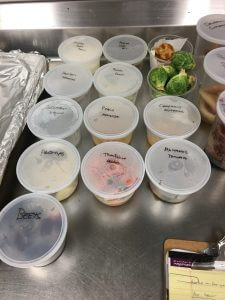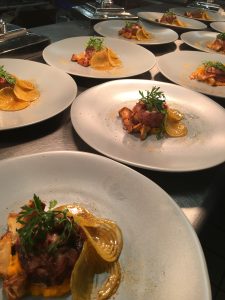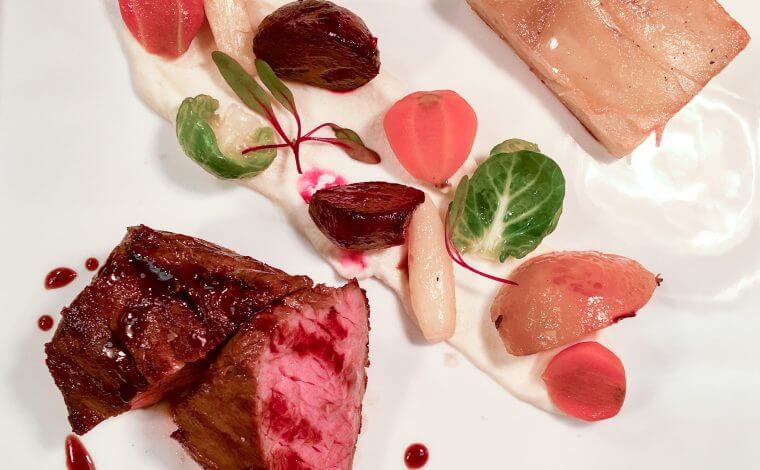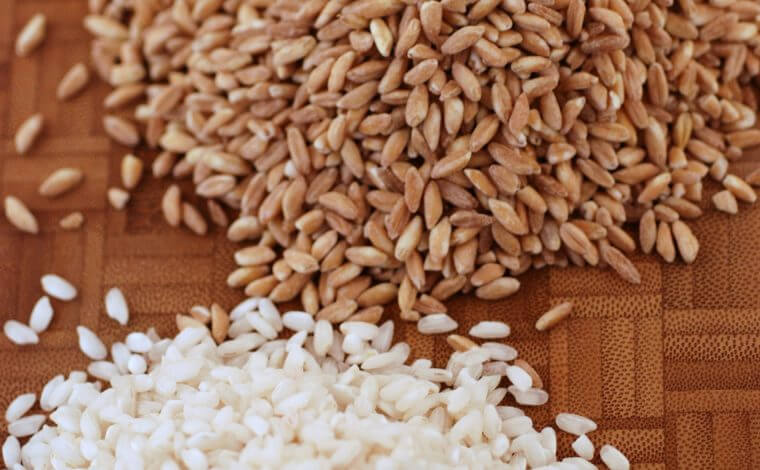As chefs, we often become comfortable in our styles. We know how to push the limits within said style, however, we may not always be willing to step out on a ledge and try something drastically different.
I would define my style as simple and respectful. I appreciate the beauty of a raw apple or the aroma of rubbed tarragon picked right from the garden. I buy or grow the finest ingredients I could get my hands on because I love and respect what I serve. Although I am classically Italian trained, my cooking beliefs have transformed over the years into something completely different. Into something that I consider to be true and honest.
So why am I saying this? Why am I talking about how I cook and what my culinary norm is? Because I had the pleasure of being challenged a short while ago to execute a dinner of extreme elegance. I was asked to give a Michelin dining experience to small group. The wheels started turning immediately and I began to work on a menu.
I am a very classic cook when it comes to technique. Along with my purist mentality on ingredients, I also cherish and prefer simple cooking methods. A good sear on a protein, hardwood grilling, braising, open fire slow roasting, these are some of my favorite techniques. While they are beautiful- they were not enough to pull off this type of dinner.
Now, I knew how to execute every item on the menu deliciously, but it wasn’t the best it could be. I began to dissect each dish, piece by piece, bite by bite. I wanted to take both myself and my diners on a culinary adventure to somewhere neither of us have been, but to do that, I had to learn a few new tricks.
I dug through my library of cookbooks and endless amounts of cooking sites and I began to pull inspiration from them. I looked at different ways to make purees, compose sauces and cook vegetables. I discovered a great deal of things that I never thought of before. It was so simple and I felt like I was 20 again learning about classic French cooking techniques for the first time.
The biggest thing for me was working with sous vide cooking for more than just proteins. I was already cooking several items sous vide… mostly pork bellies, briskets, short ribs, other tough cuts of meat that I want to cook at a controlled temperature and maximize yields. But the more I started to dive into the possibilities, the more I was excited to take on this new style of cooking. So, what was the menu I ended up serving?
As the dinner was in early September, I wanted to create a menu that brought my diners from the end of summer into early autumn. I focused on bringing a different experience in both flavor and texture to each course so the meal would stay exciting. I started in my garden, as produce is the greatest expression of the seasons, tasting and picking vegetables to see what I wanted to use. Once I had that guideline, I chose my proteins. This may not be the traditional way most chefs write their menus, as many look at the protein and build the flavors around it.
Peaches and nectarines were in their prime- two of my favorite fruits. I immediately built the amuse and first course with those. Then, I stated to look at mushrooms. A farmer I know told me he had some beautiful chanterelles; course two identified. After that, I chose sunchokes, sunflower seeds and black garlic for the third course. A great follow up to the mushrooms and a good preface for the fourth course. I felt at this point the diners would be ready to start tasting fall, so I brought in the root vegetables. This was a great progression from where the dinner started.
Finally, I created the last course with pears. Nothing says fall to me like pears, and I had some beauties growing that were ready to pick. So now that I had my flavor profiles, it was time to build my menu!
Amuse –Rich, sweet and zesty. A good start to ignite the palate for courses to come.
Foie Gras, Peach Mostarda, Fennel Puree
First Course– Chilled, refreshing and lightly spicy. Brighten the mouth for a rich following course.
Hawaiian White Tuna, Compressed Nectarine, Cucumber, Icicle Radish, Micro Basil, Fresno Chili Oil
Second Course– Earthy, gelatinous, and full bodied. Overload the palate with richness as the mid-course.
Suckling Pig, Carrot Puree, Buckwheat Corzetti, Suckling Pig Jus, Chantarelle Mushrooms
Third Course– Smokey, sweet and acidic. A bright recovery from the pork and a bridge to the steak.
Pheasant, Smoked Sunchoke, Heirloom Tomatoes, Sunflower Seed, Black Garlic, Mache
Fourth Course– Tangy, earthy and creamy. A full balanced entrée with the textures and experiences to complete the savory part of the meal.
Dry Aged Rib Eye, Celery Root Puree, Beets, Brussels Sprouts, Parsnips, Pommes Anna, Rosemary Jus
Fifth Course– Rich, salty and lightly spiced. A subtle ending to a variety of experiences.
Poached Pear, Mascarpone Semi Freddo, Marcona Almond Shortbread, California Cinnamon
The meal was a success! My team and I dug deep into our culinary repertoire and took every step to give pure elegance. We peeled the tomatoes, strained the sauces through coffee filters, hand-picked every leaf, and did every other obsessive step to give the best we could.
This really was a fantastic experience for me as it reminded me of how much more beauty there is in the culinary world. As I always say, if you put your whole heart into cooking and take your time, you can truly create something beautiful and memorable.




